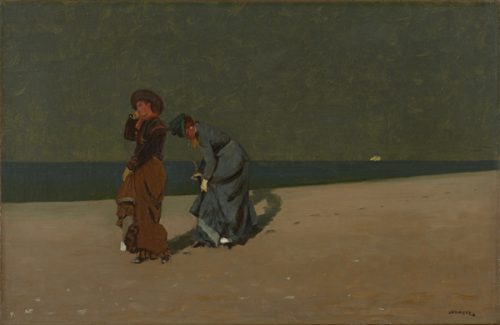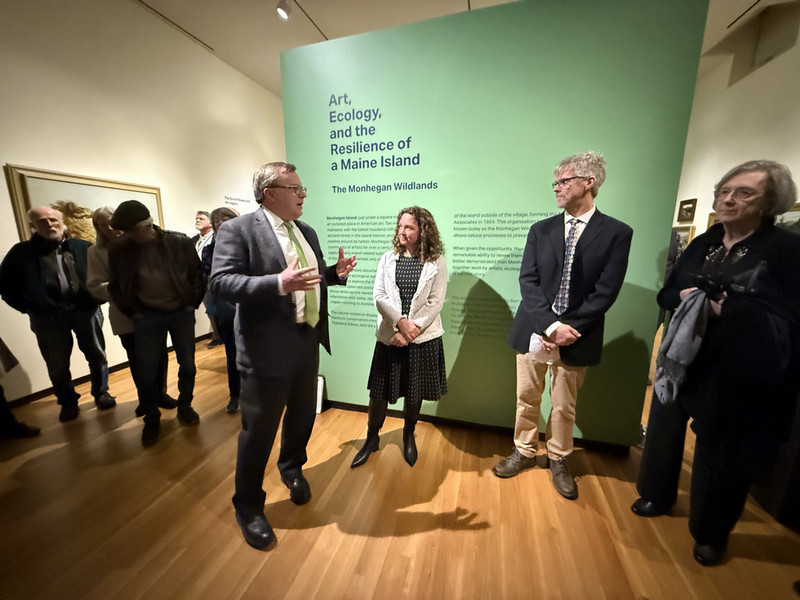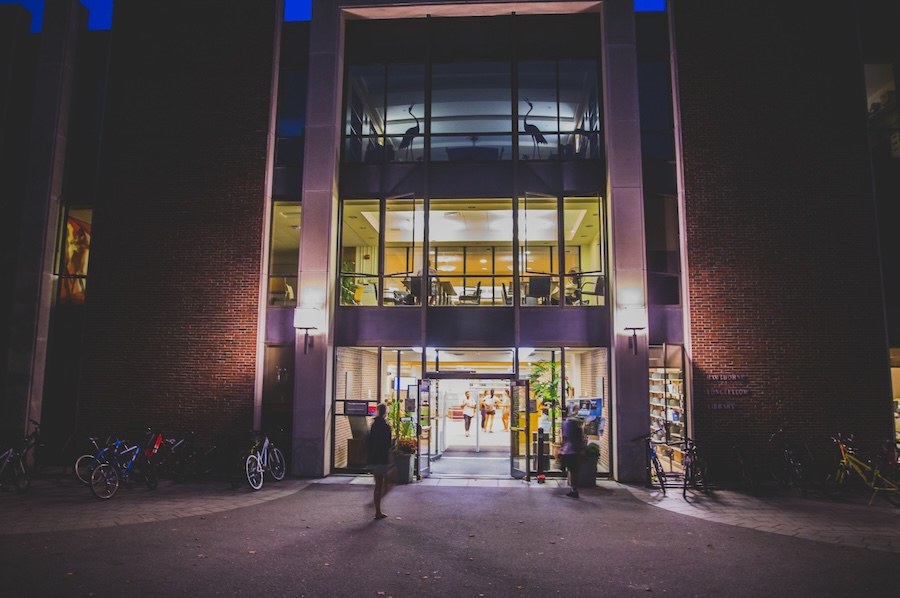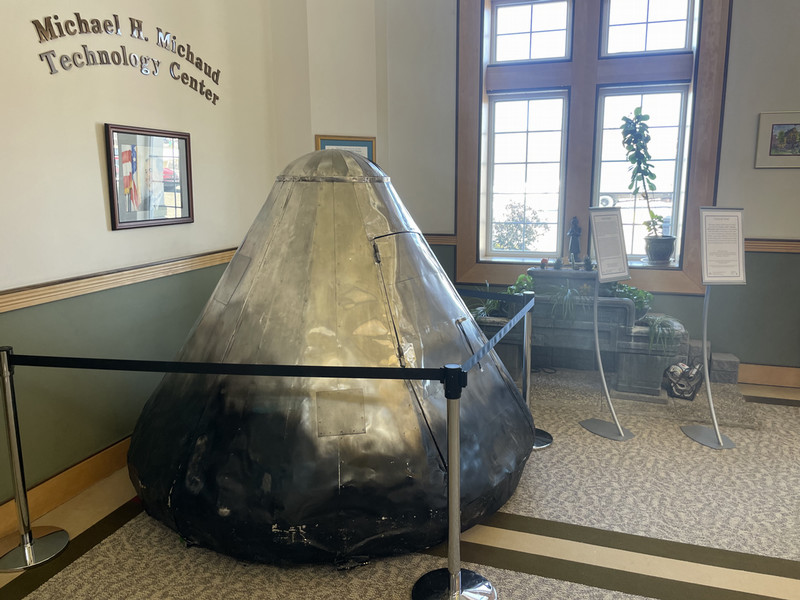Student Choice: Allegra Bersani, Bowdoin Class of 2020
By Bowdoin College Museum of Art
When giving a tour, the painting that I am always most excited to stop at is Winslow Homer’s Evening on the Beach. Painted between 1871 and 1878, Evening on the Beach is a testament to Homer’s love for travel. Homer traveled not only domestically, particularly during the Civil War, where as a correspondent for a newspaper he ventured to Virginia on several occasions, but also internationally, to the Caribbean and Europe. This work, painted not long after a ten-month stay in France in 1876, reflects the influence of those travels. While Homer did not seem to be taken by contemporary French art like some of his peers who enrolled in art schools there, he did seem to have taken from them the desire to incorporate into their works outdoor light as well as flat and simple forms. As compared to his earlier Civil War era paintings such as Sharpshooter (1862), the composition of this painting, made after Homer spent time in France, is remarkably planar. The painting is separated simply into a sky, a sea, and a beach, all of which appear to lack tactility or texture. Yet, despite this distillation of forms, the shadow cast across the beach by the women who stop to fix their skirts animates the painting with a controlled energy. In many ways, this painting symbolizes to me the beginning of Homer’s exploration of light that would later dominate his work.
Allegra Bersani, ’20



